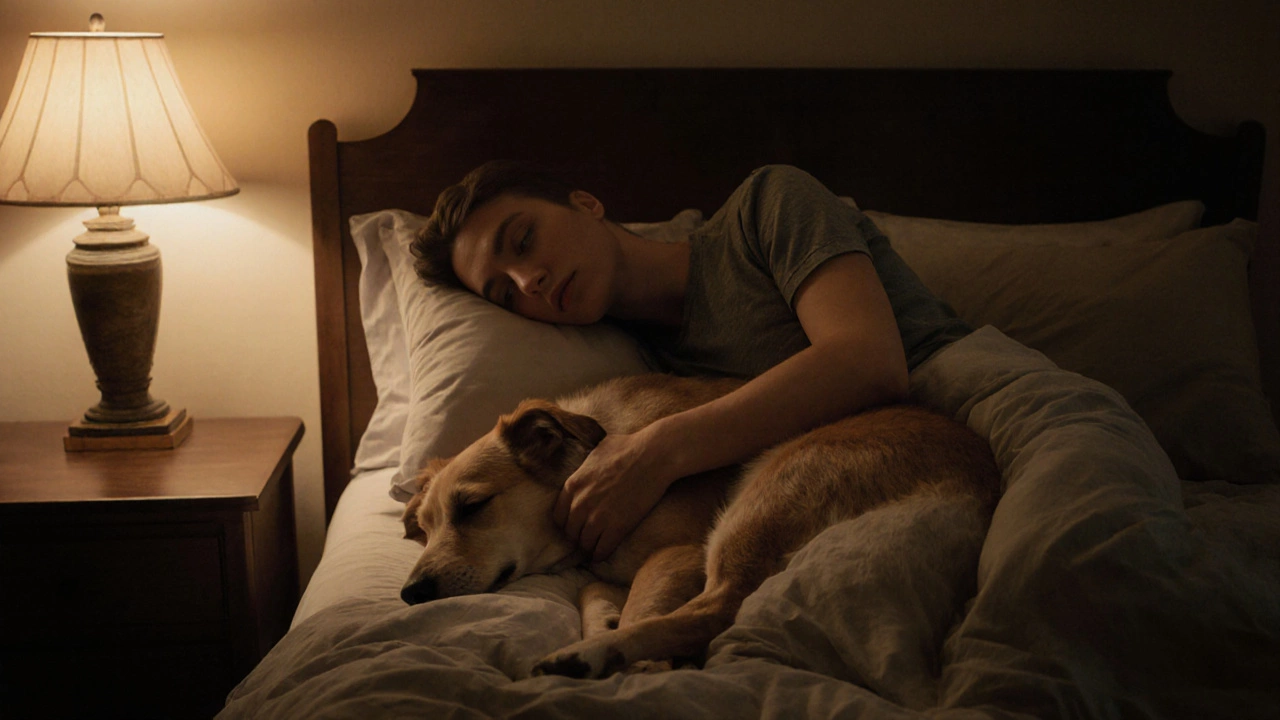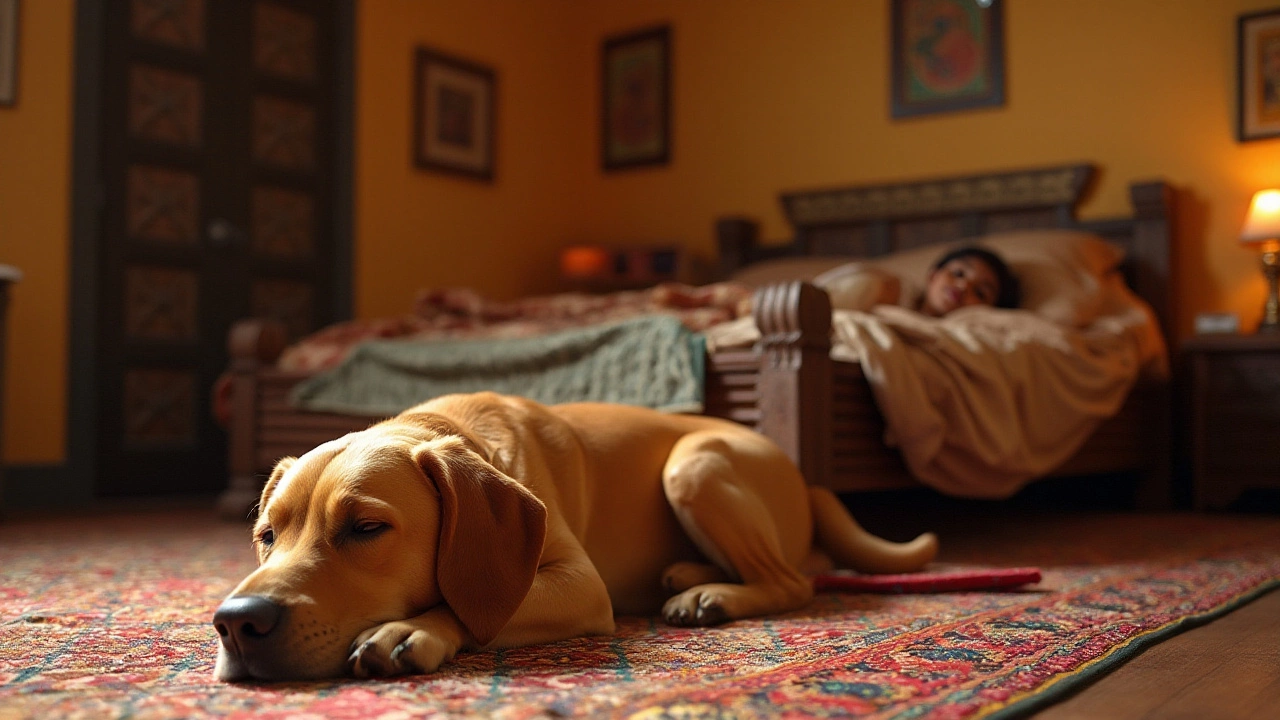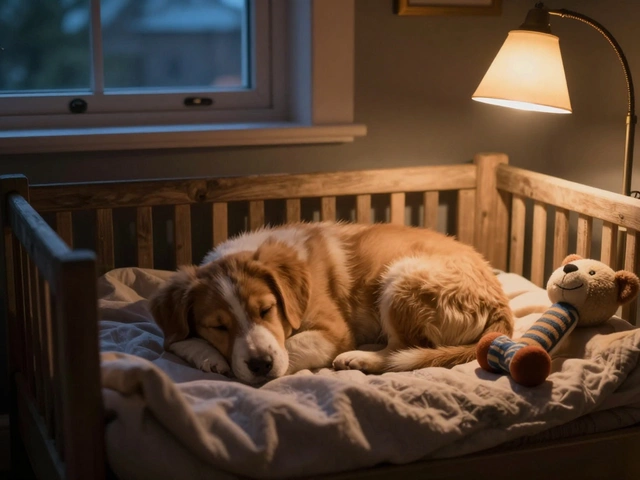Dog Sleeping Habits: What Every Owner Should Know
Ever wonder why your pup jumps on your pillow or how long they should stay in a crate at night? Dogs have a few simple rules that keep them comfortable and safe while they snooze. Below you’ll find the most common sleep questions, practical tips you can use today, and a quick guide to choosing the right sleeping spot for your furry friend.
Why Dogs Like to Sleep Close to You
Most dogs see you as part of their pack, so sleeping next to you feels natural. The warmth, familiar scent, and the feeling of security all trigger a calm response. If your dog keeps crawling into your bed, it’s usually because they’re seeking those pack‑like comforts. The habit isn’t harmful unless it disturbs your own rest. To keep both sides happy, try adding a cozy blanket on the floor for them or a pet‑size bed at the foot of your mattress.
When to Stop Using a Crate for Nighttime
Crates are great for training, but they’re not a permanent bedroom solution. Most dogs outgrow the need for a crate somewhere between 12‑18 months, depending on size and confidence. Look for signs: they start whining less, can settle on a dog bed, and seem less anxious when the crate door opens. When you notice these cues, transition slowly—place the crate next to their new bed for a few nights, then move it out of the bedroom entirely.
Getting the timing right prevents stress and helps your dog develop good sleep independence. If you’re unsure, check out our post “At What Age Should a Dog Not Sleep in a Crate?” for a detailed checklist.
Another factor is the type of bed you offer. Dogs with joint issues or larger breeds benefit from memory‑foam pads, while small dogs may prefer a plush donut style. Position the bed in a low‑traffic area where they can keep an eye on the room but won’t be startled by loud noises.
Temperature matters, too. A cool spot in summer and a warm, draft‑free corner in winter keep them comfortable. If your dog likes to stretch out, make sure the bed is long enough—most adult dogs need at least 24‑30 inches of space.
Finally, keep an eye on sleep patterns. Dogs typically sleep 12‑14 hours a day, with a mix of deep and light naps. Excessive restless sleep could signal anxiety, pain, or an underlying health issue. A quick vet check can rule out medical causes, while calming routines—like a short walk before bedtime or a gentle brushing session—can improve sleep quality.
Got more questions? Check out “Dog Beds: Why Does My Dog Sleep Next to My Bed?” for deeper insight on bedding options, and explore “How Can I Soothe My Dog After a Haircut?” for calming tips that also work at night.
By understanding why your dog chooses certain sleeping spots and recognizing the right time to move them out of a crate, you’ll both enjoy better rest. Simple changes—adding a comfy bed, adjusting the temperature, and watching for signs of outgrowing the crate—make a big difference without any fancy equipment.

Why Dogs Choose to Sleep With You - Understanding Canine Sleep Behavior
Discover why dogs love sleeping with you, from pack instincts and oxytocin bonding to comfort and health benefits, plus tips for the perfect bedtime setup.
read more
Do Dogs Prefer Solitary Slumber or Shared Snuggles? Insights on Dog Sleeping Preferences
Dogs, like humans, have their own sleep preferences, which can significantly impact their comfort and well-being. While some dogs enjoy having their personal sleeping space, others may prefer the company of their human or another pet companion. This article explores the factors influencing a dog's sleep choices, the importance of providing the right type of bed, and tips for ensuring a restful night's sleep for your furry friend. Understanding your dog's needs can lead to a happier, healthier life together.
read more



